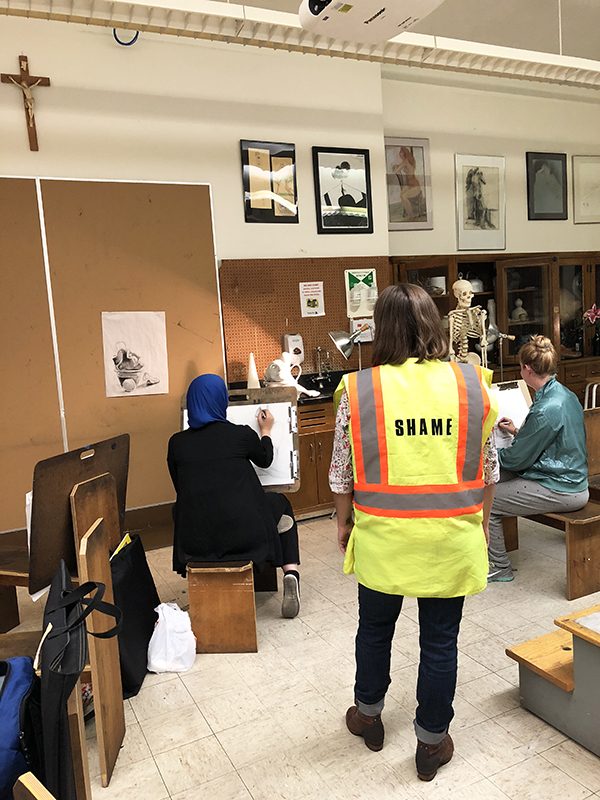The Open Call for the Social Art Award 2019 under the topic “We are the People – Peaceful Revolutions” was closed on December 15, 2019. We are very impressed by 558 submissions that were contributed by artists coming from 65 countries across all continents.
The winners of The Social Art Award 2019 are Narcissa Gold (USA), Melinda Mouzannar (Lebanon) and Bogna Grazyna Jaroslawski (Poland/Germany). The Honorary Mention goes to Kingson Kin Sing Chan (Hong Kong/UK).
Below you find the artworks, that passed the initial jury round. The public voting took place till 30 December and is a tool to give more public visibility to the topic and the artworks. It does not replace the final jury judgment. There were two wildcards for the most voted artworks that entered the final shortlist.
The focus diversity of applications shows that artists are active in the multi-faceted fields of socially engaged art reflecting on wars, genocides, femicides, traumata, violence against refugees, children, women, men, disabled people, LGBTIQs, animals. They share feelings for the planet and its living species, but also showing hopelessness due to complex crises be it climate change (e.g. in regard to water pollution), capitalism, corruption, a violation against human rights, nature, protected national parks. Many of the artists are constantly trying to give a voice to the poorest or empower unheard social groups.
It’s not only about peaceful revolutions, but it’s also about feeling a deep connection and showing love and respect for each other.
Thank you all for sharing your great and inspirational work and look at all the great contributions!
Shame Project (Photo Documentation)
Rebecca Kautz
open category
Shame Project is a year-long durational performance (2018-2019) considering the emotional phenomena of shame in time and place. Through public collaborative action we work through our deeply personal shame while finding solidarity in the ubiquity of shame as a collective emotional state, albeit one with detrimental and paralyzing effects. Participants wear a high visibility shame vest for a self-determined period of time. The intention is to expose shame and our shared humanity for an empathic response. Participants reflect upon and confront personal and social manifestations of feelings of self-worth. How can art catalyze change?: I have been using the format of durational, socially engaged art since 2016 as a form of social action and personal reflection. Art has been harnessed as a vehicle for social engagement and philosophical exploration. The work has inspired those who have encountered the public project and others are joining in the effort, expanding the reach. The project was intended as a collaborative action that documents shame in all areas of life. Viewers of the Shame Project and those wearing the shame vest become witnesses of existing shame in themselves, in others and in the broader world. Once shame is named, participants can then start to answer why it is there.
Shame Project is a year-long durational performance (2018-2019) considering the emotional phenomena of shame in time and place. Through public collaborative action we work through our deeply personal shame while finding solidarity in the ubiquity of shame as a collective emotional state, albeit one with detrimental and paralyzing effects. Participants wear a high visibility shame vest for a self-determined period of time. The intention is to expose shame and our shared humanity for an empathic response. Participants reflect upon and confront personal and social manifestations of feelings of self-worth. How can art catalyze change?: I have been using the format of durational, socially engaged art since 2016 as a form of social action and personal reflection. Art has been harnessed as a vehicle for social engagement and philosophical exploration. The work has inspired those who have encountered the public project and others are joining in the effort, expanding the reach. The project was intended as a collaborative action that documents shame in all areas of life. Viewers of the Shame Project and those wearing the shame vest become witnesses of existing shame in themselves, in others and in the broader world. Once shame is named, participants can then start to answer why it is there.



